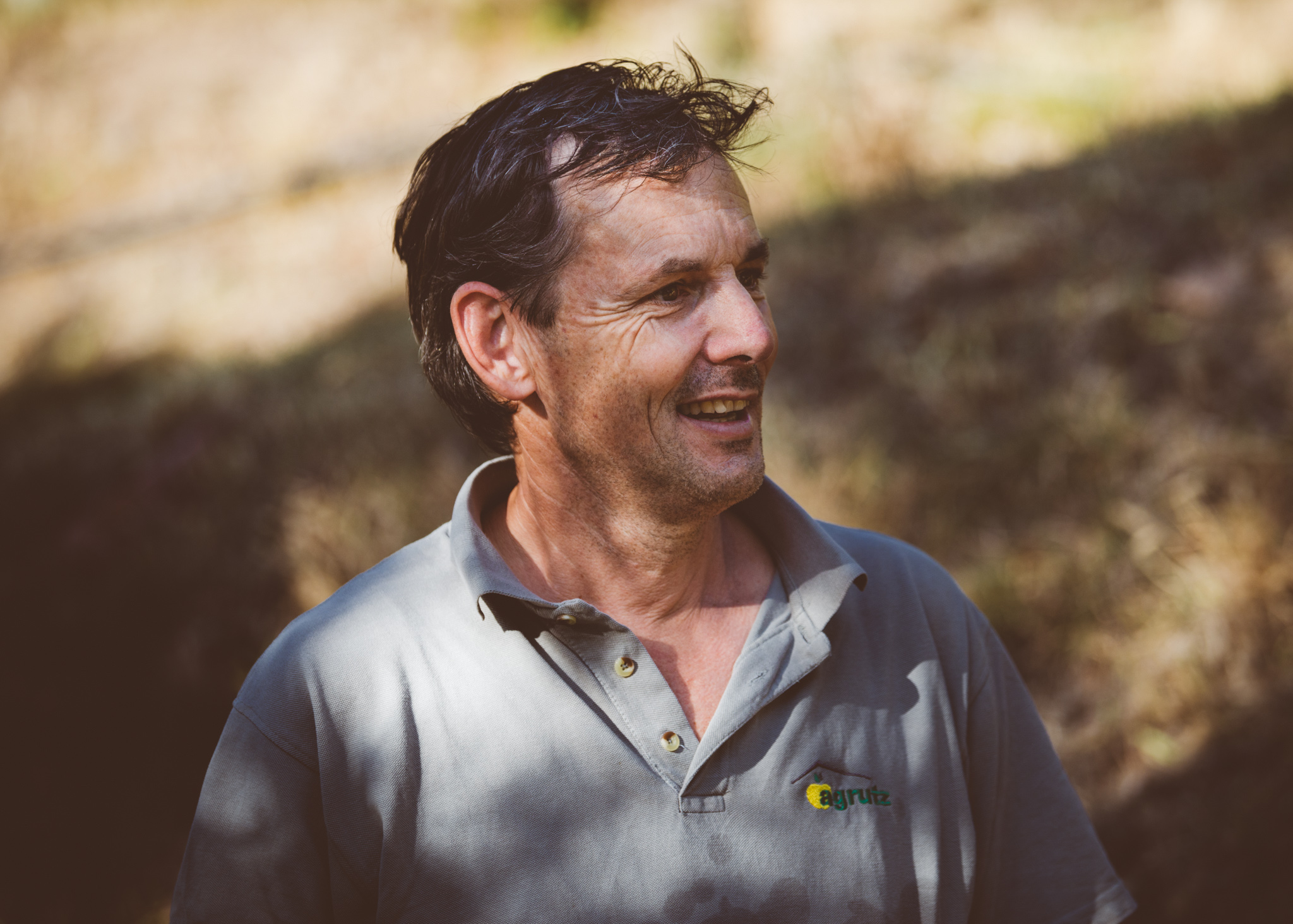

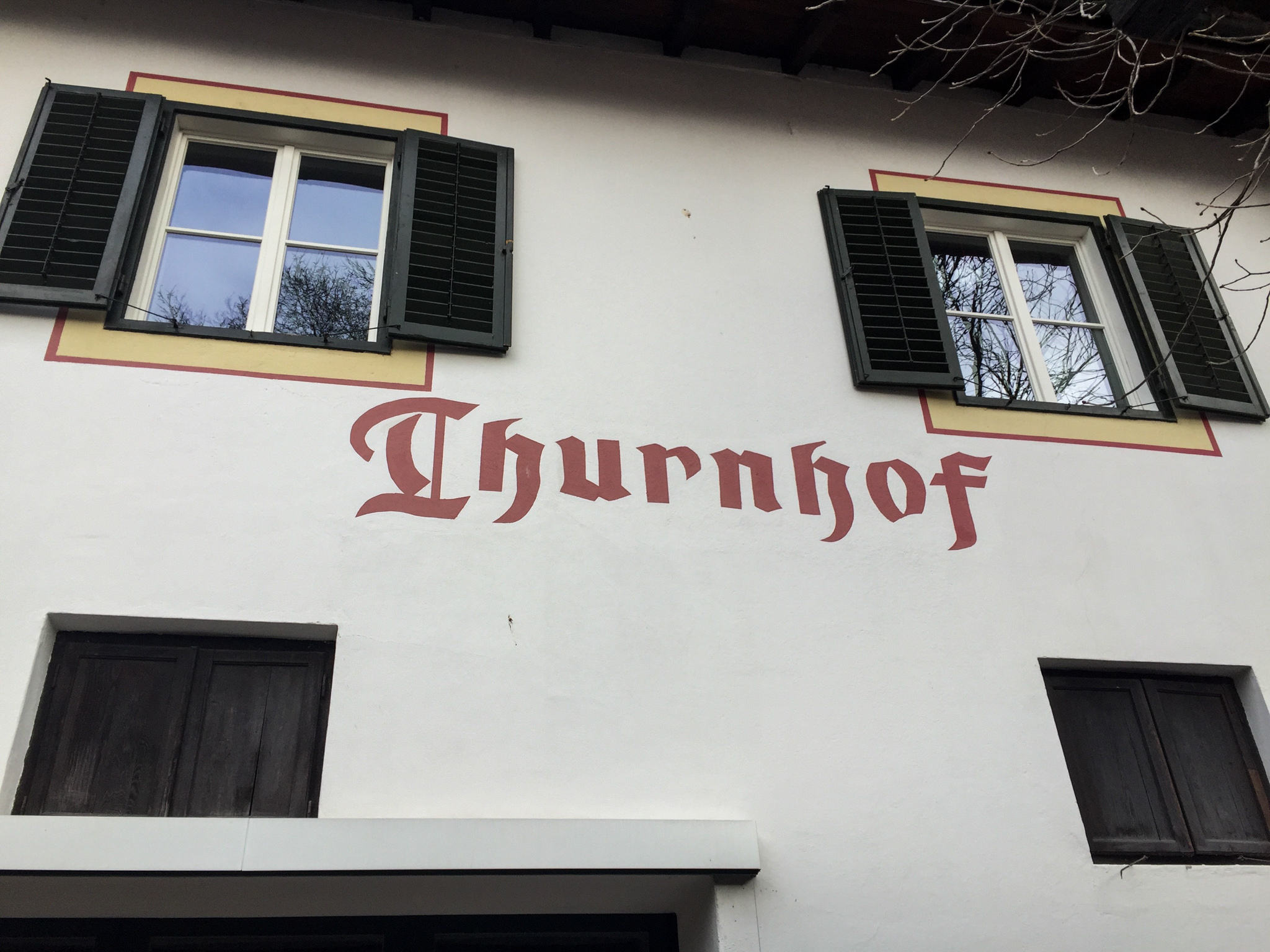
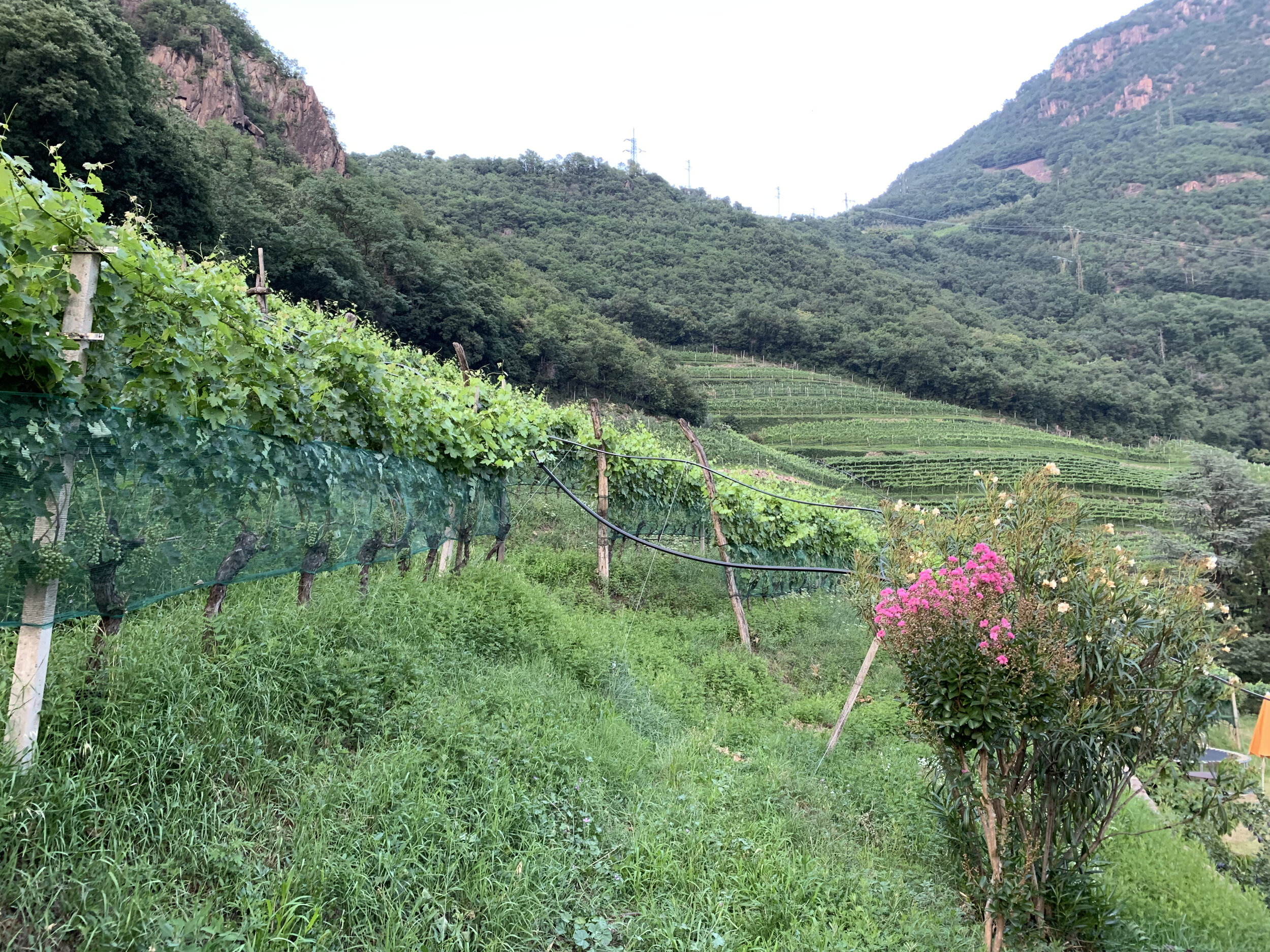
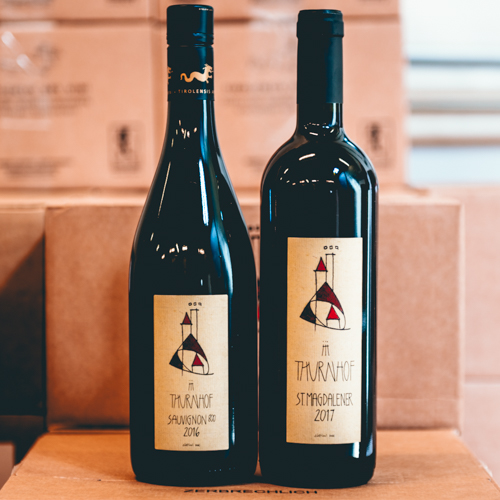
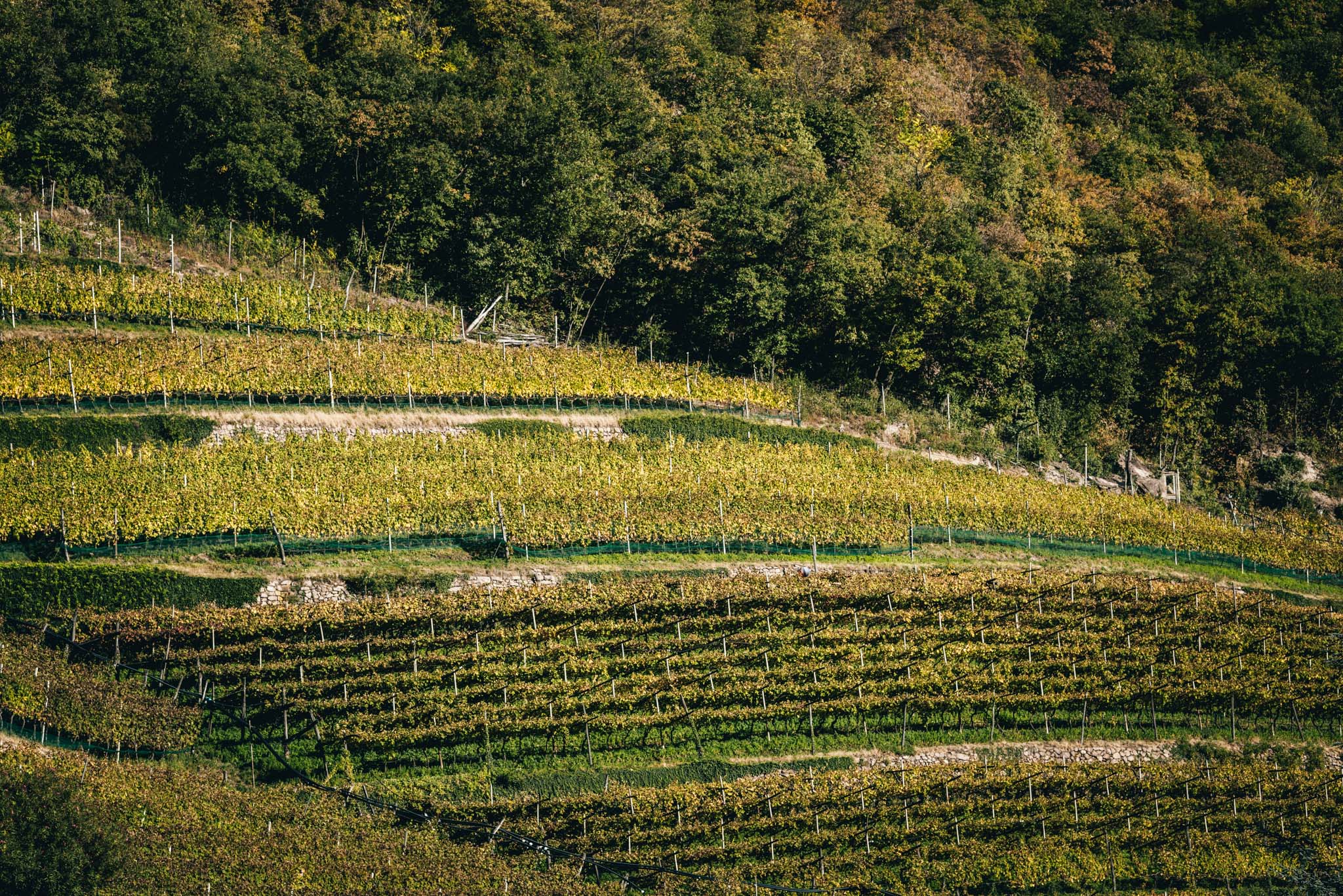
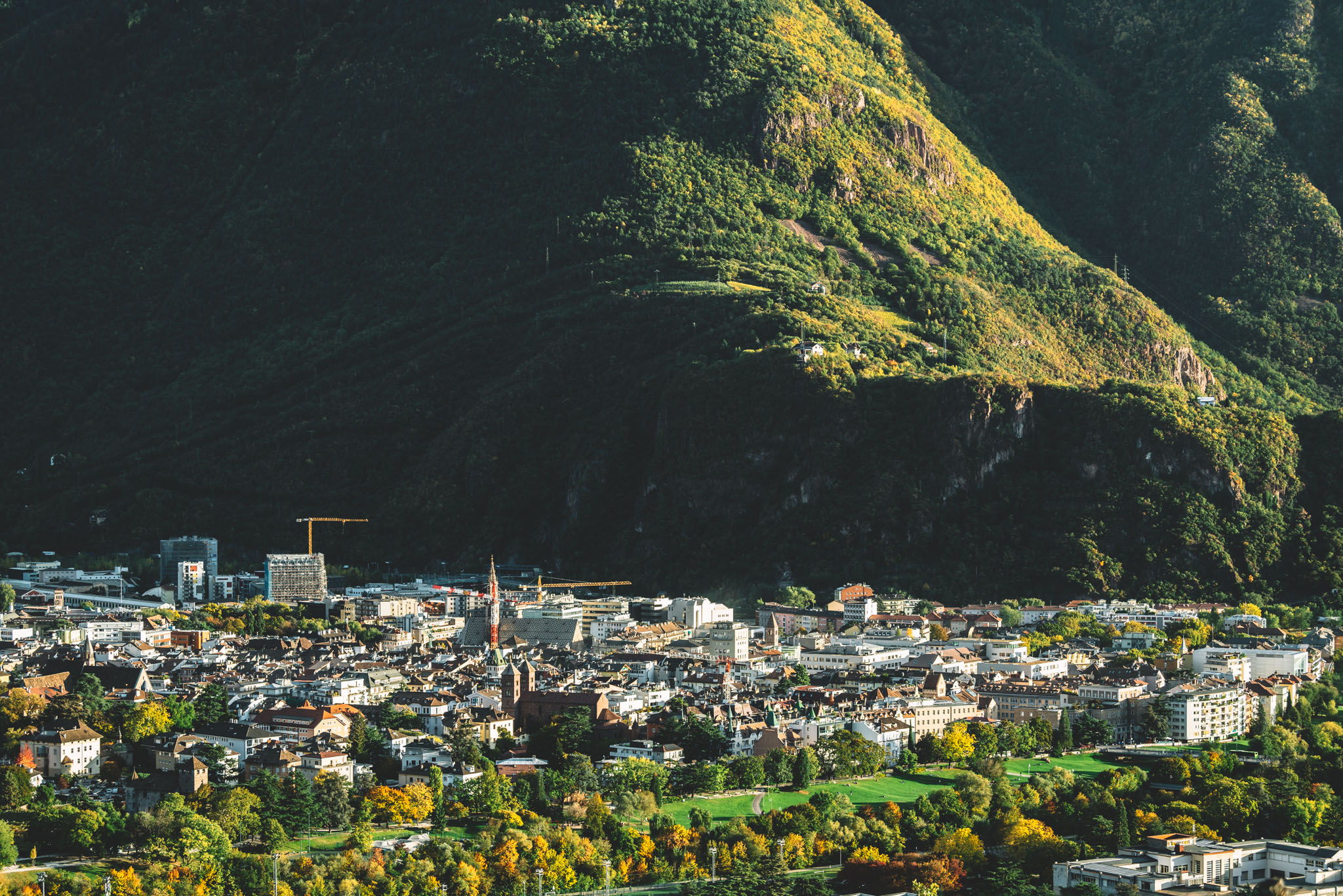
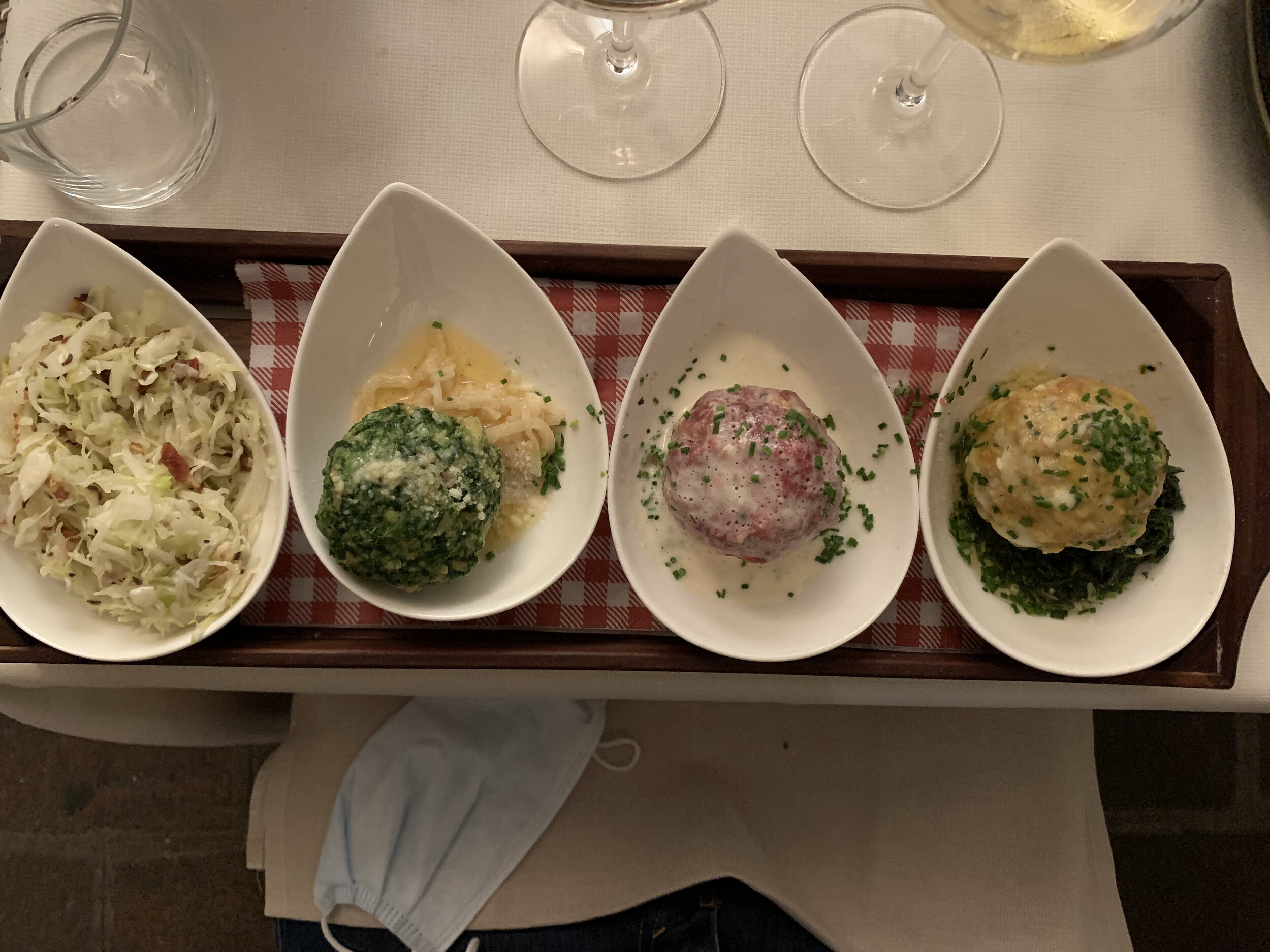
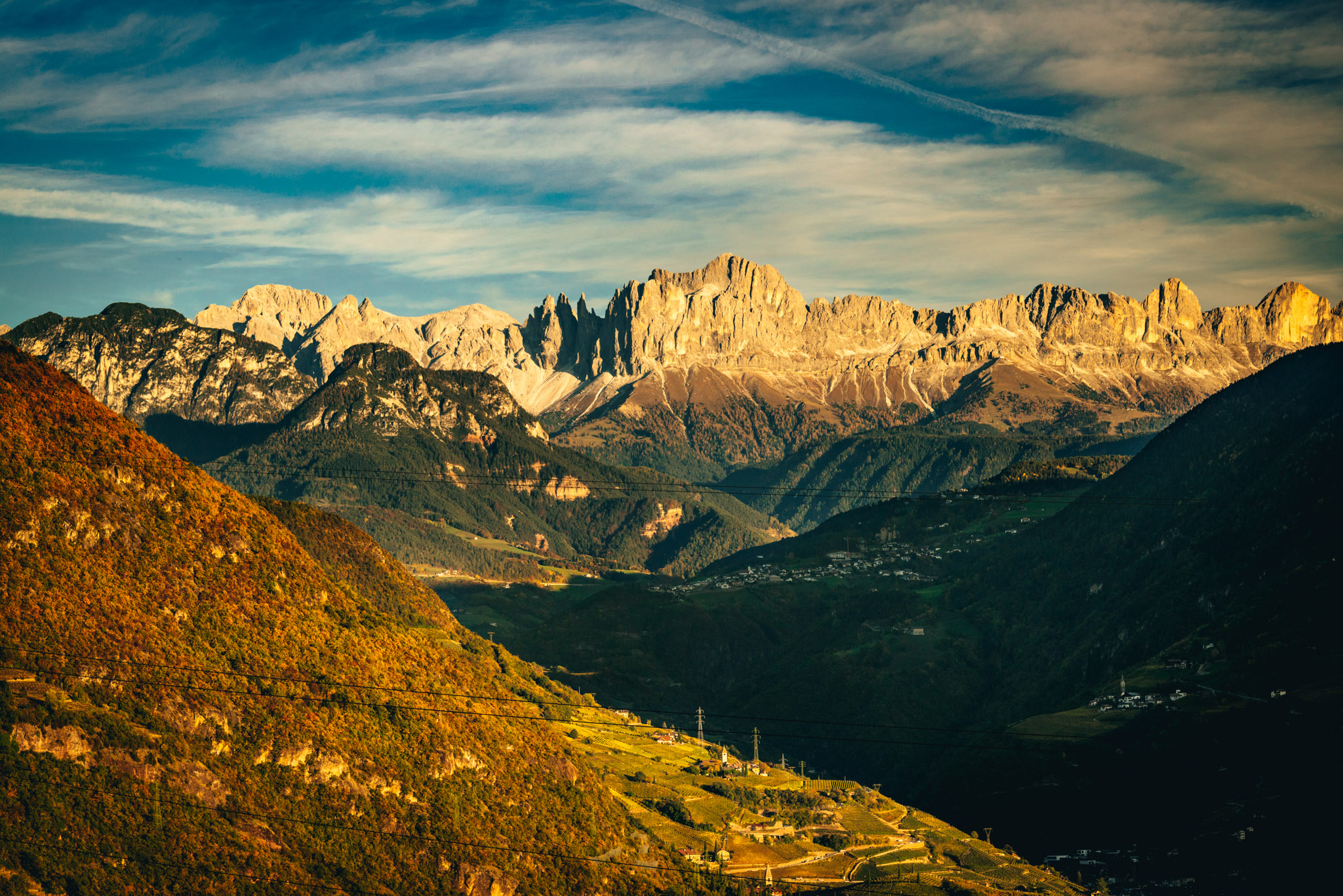
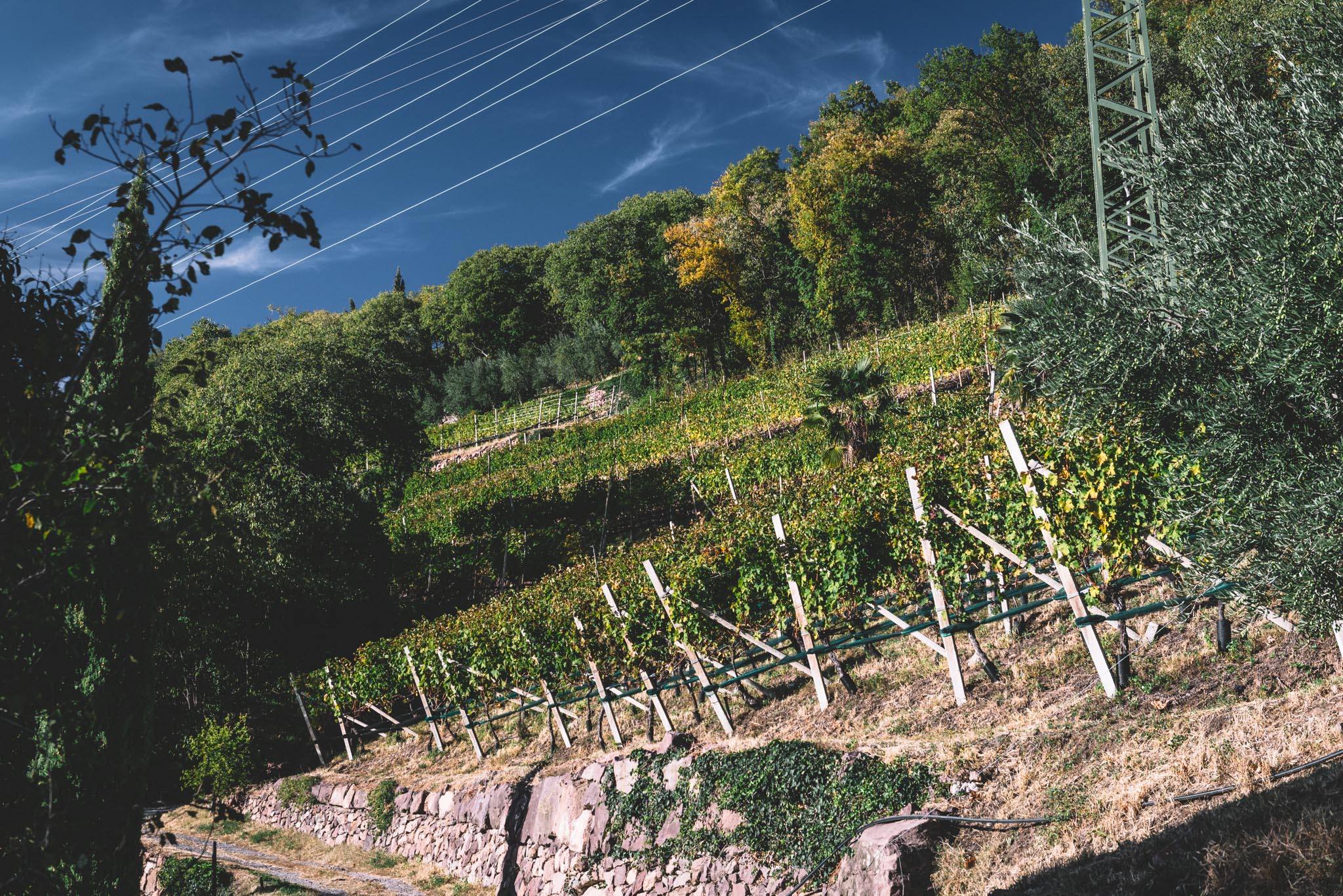
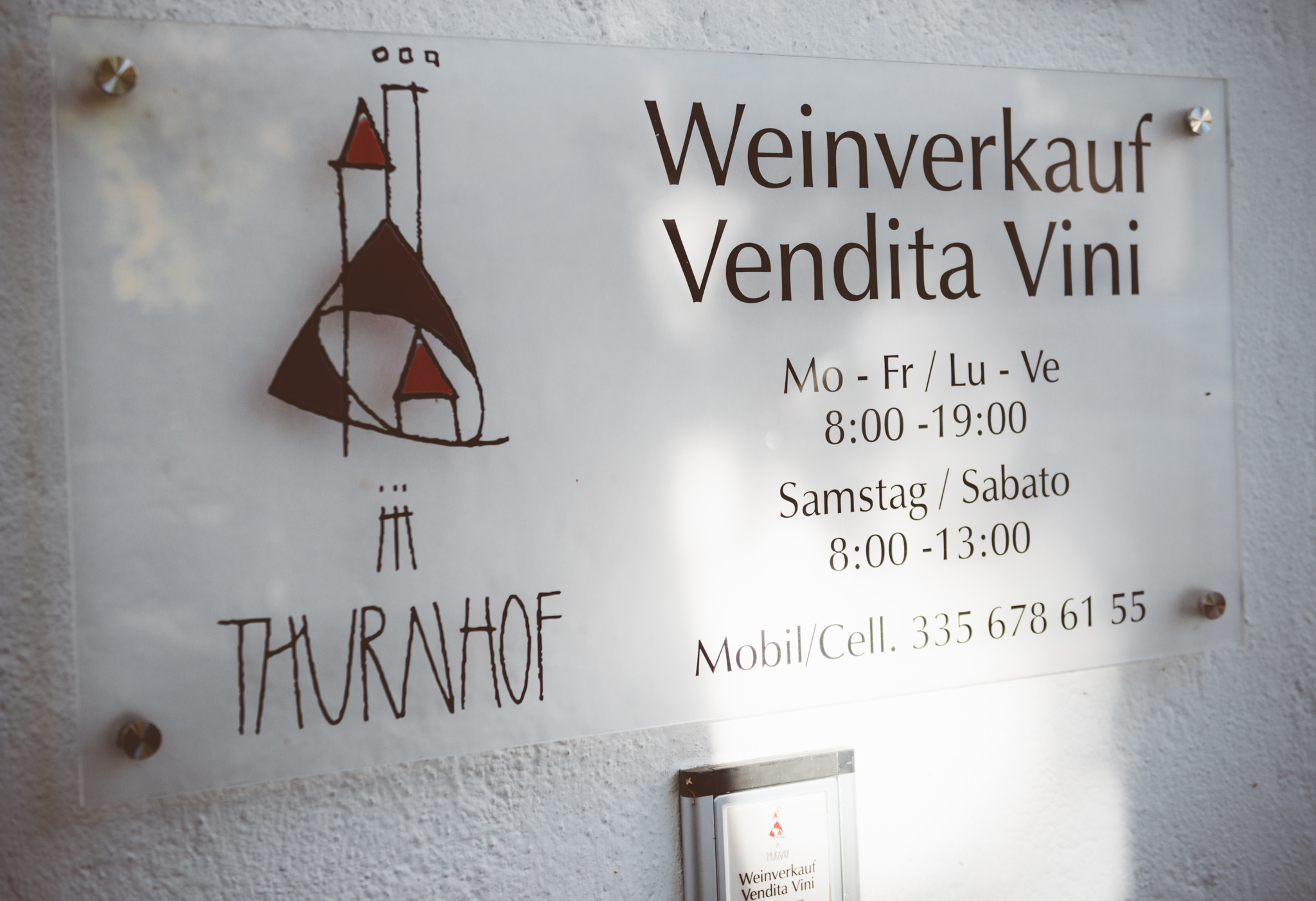
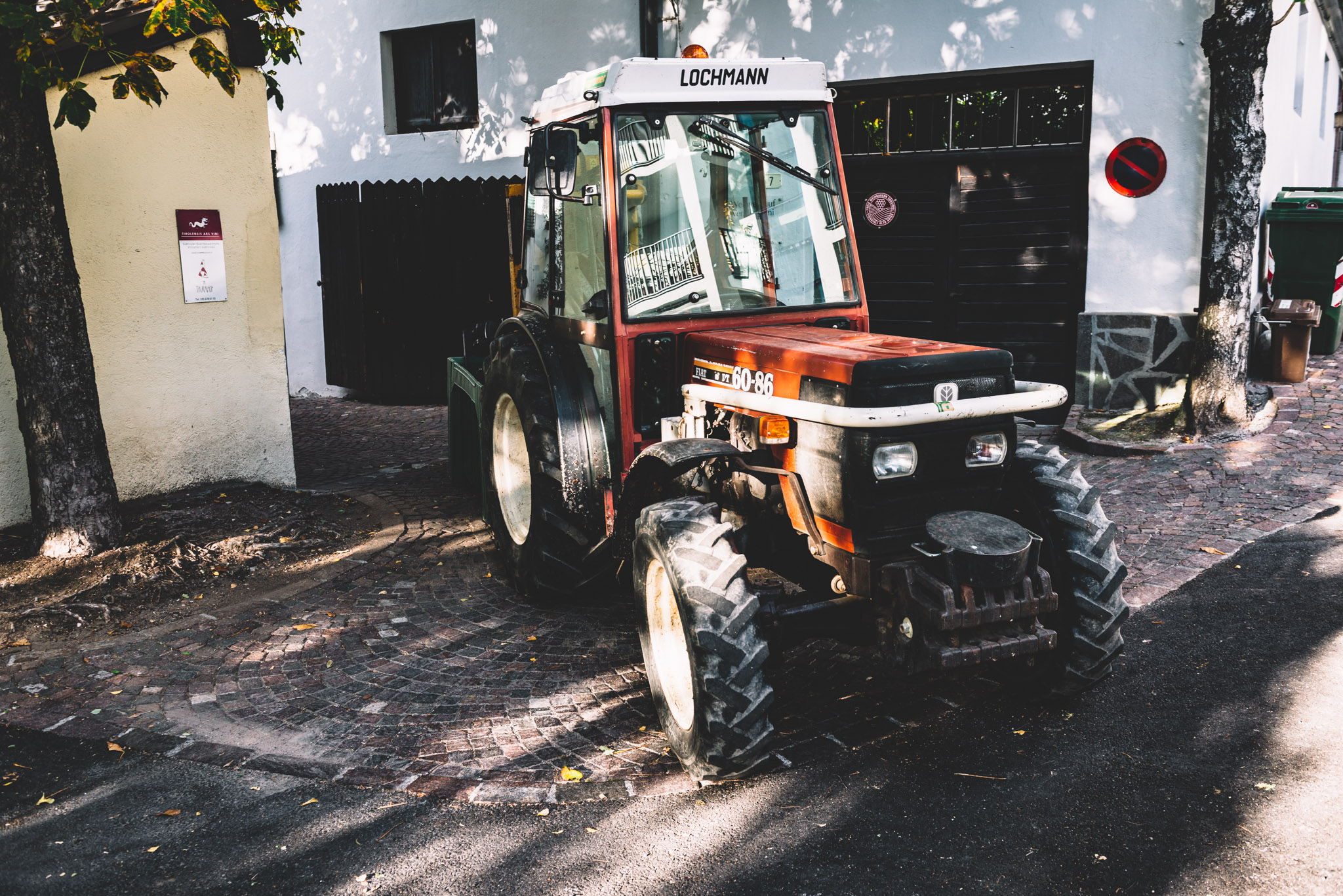
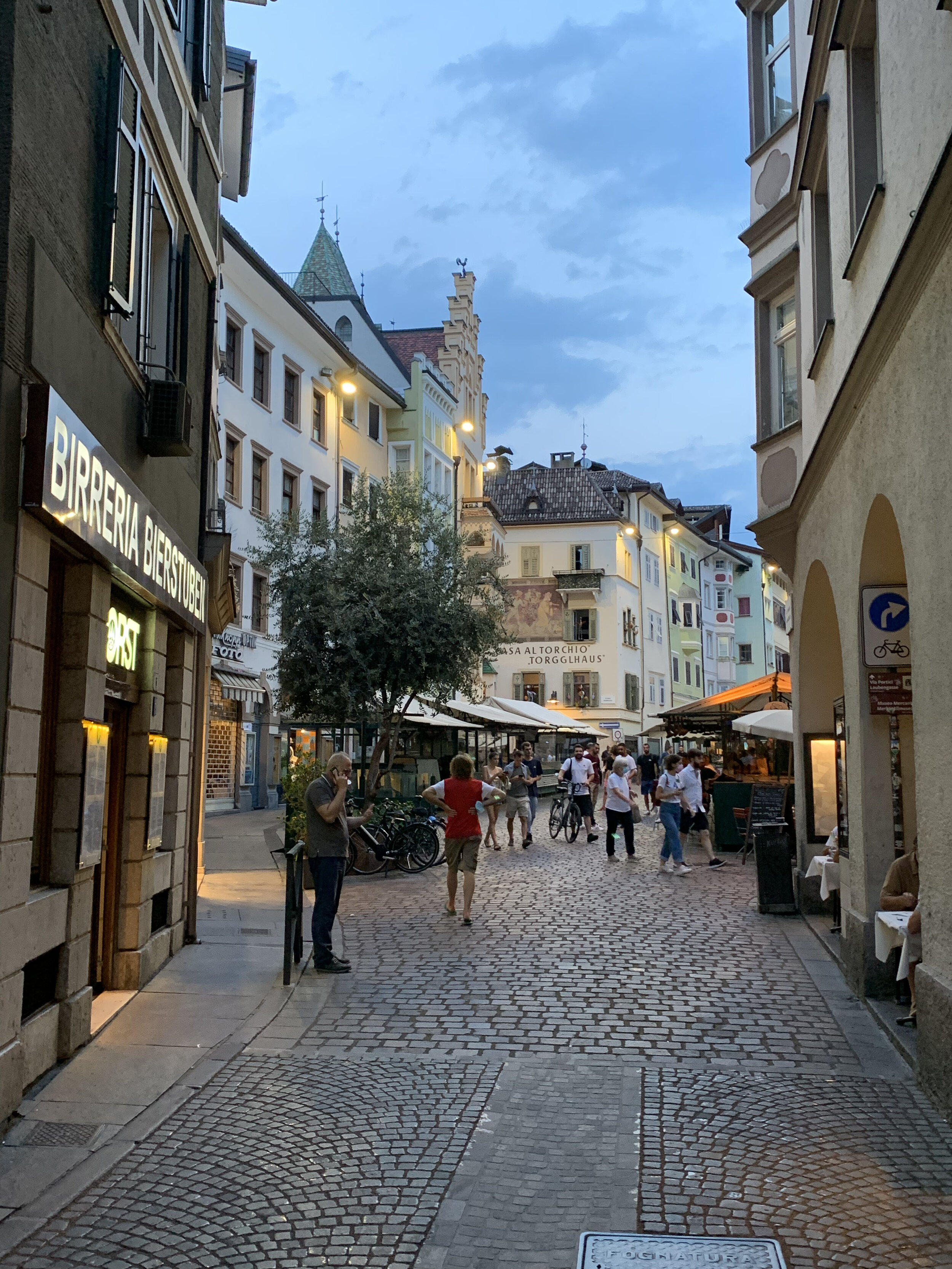
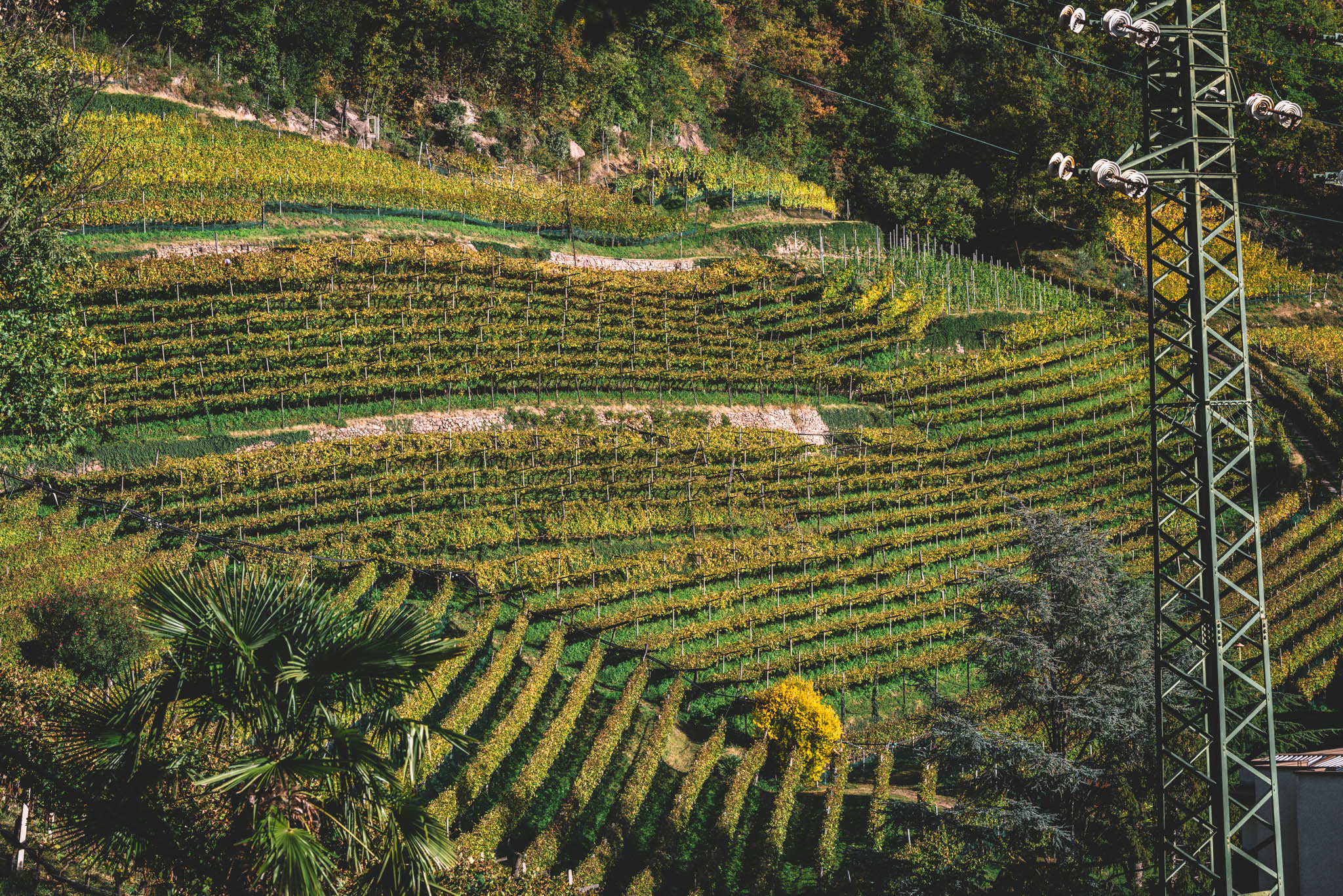
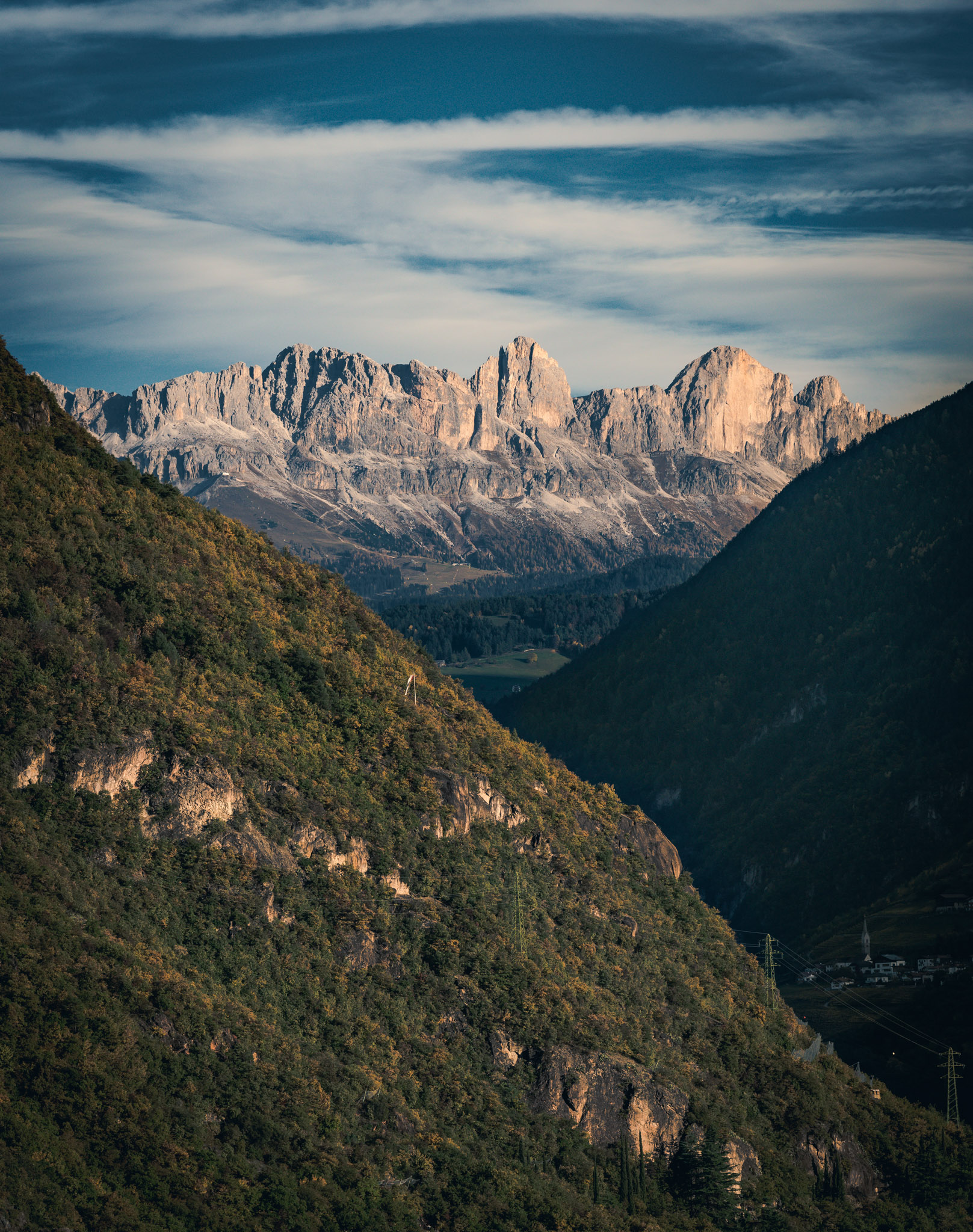
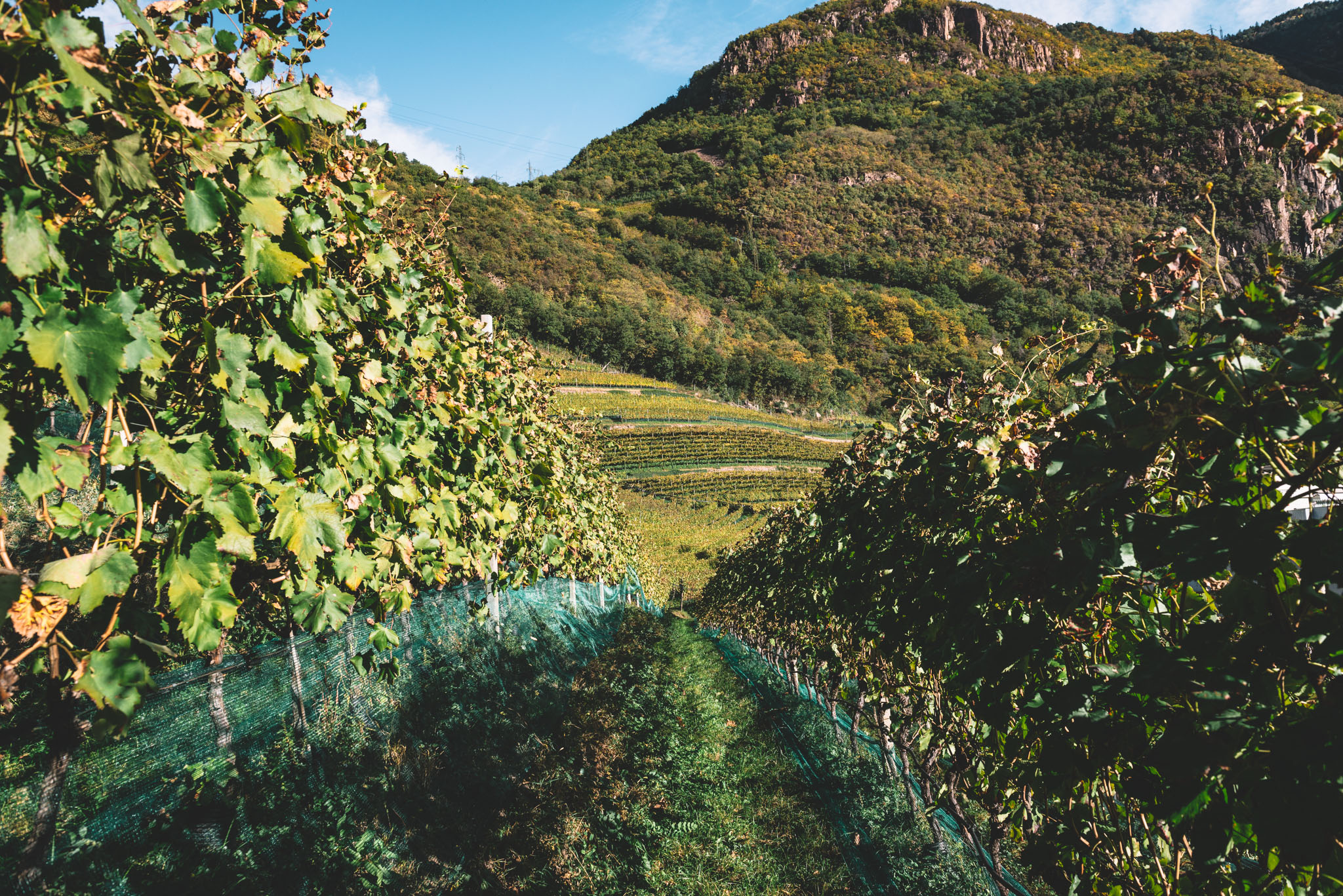

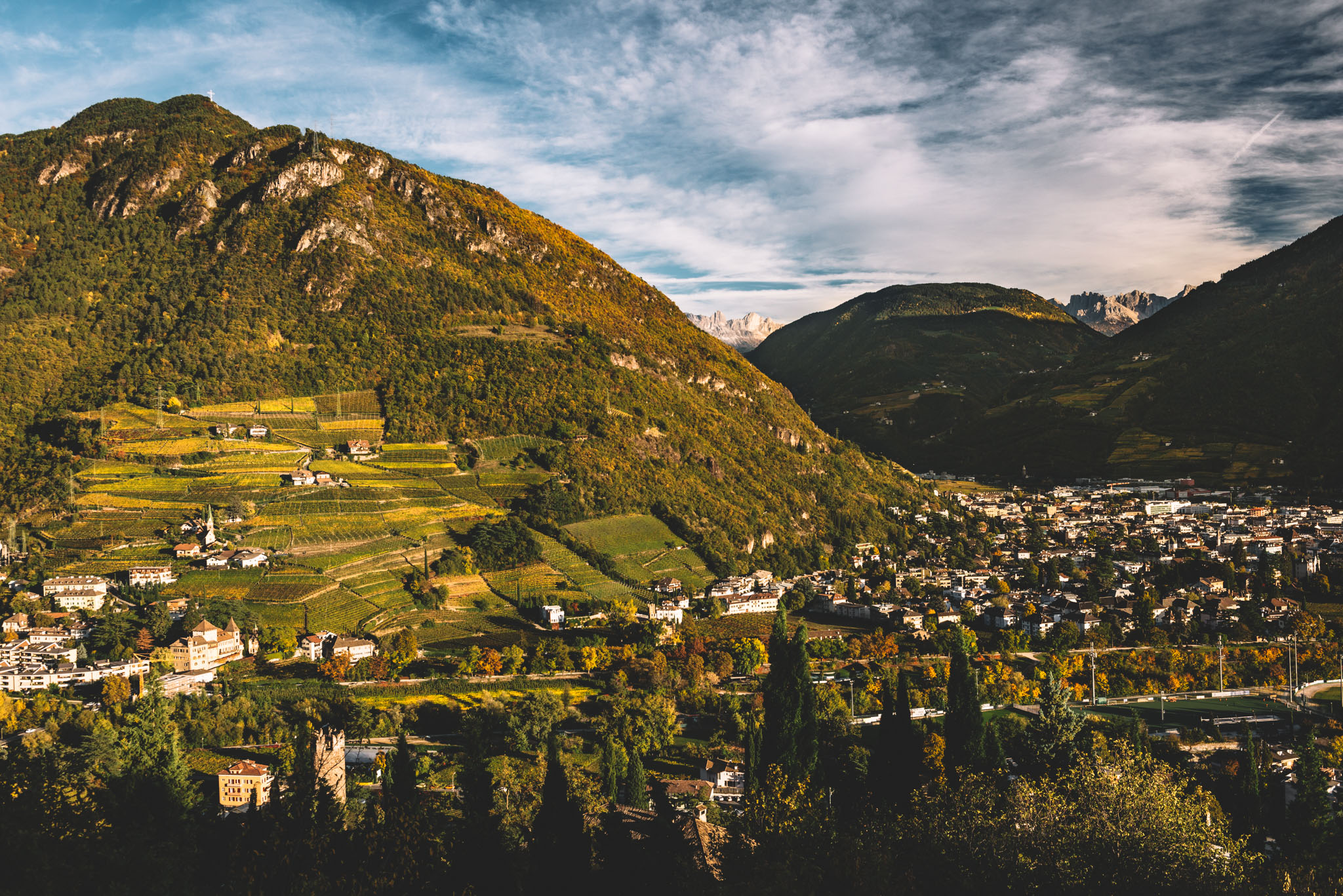
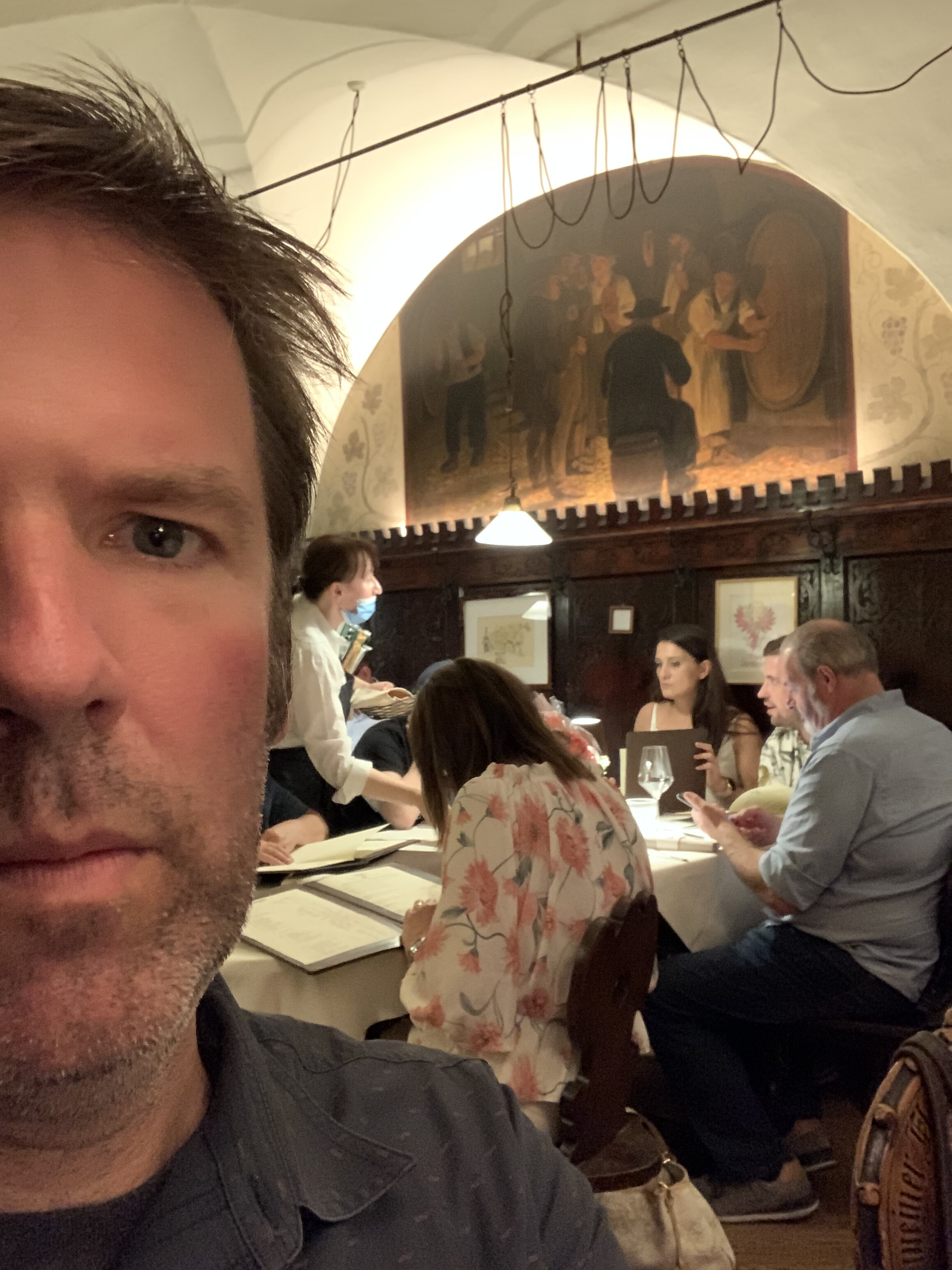
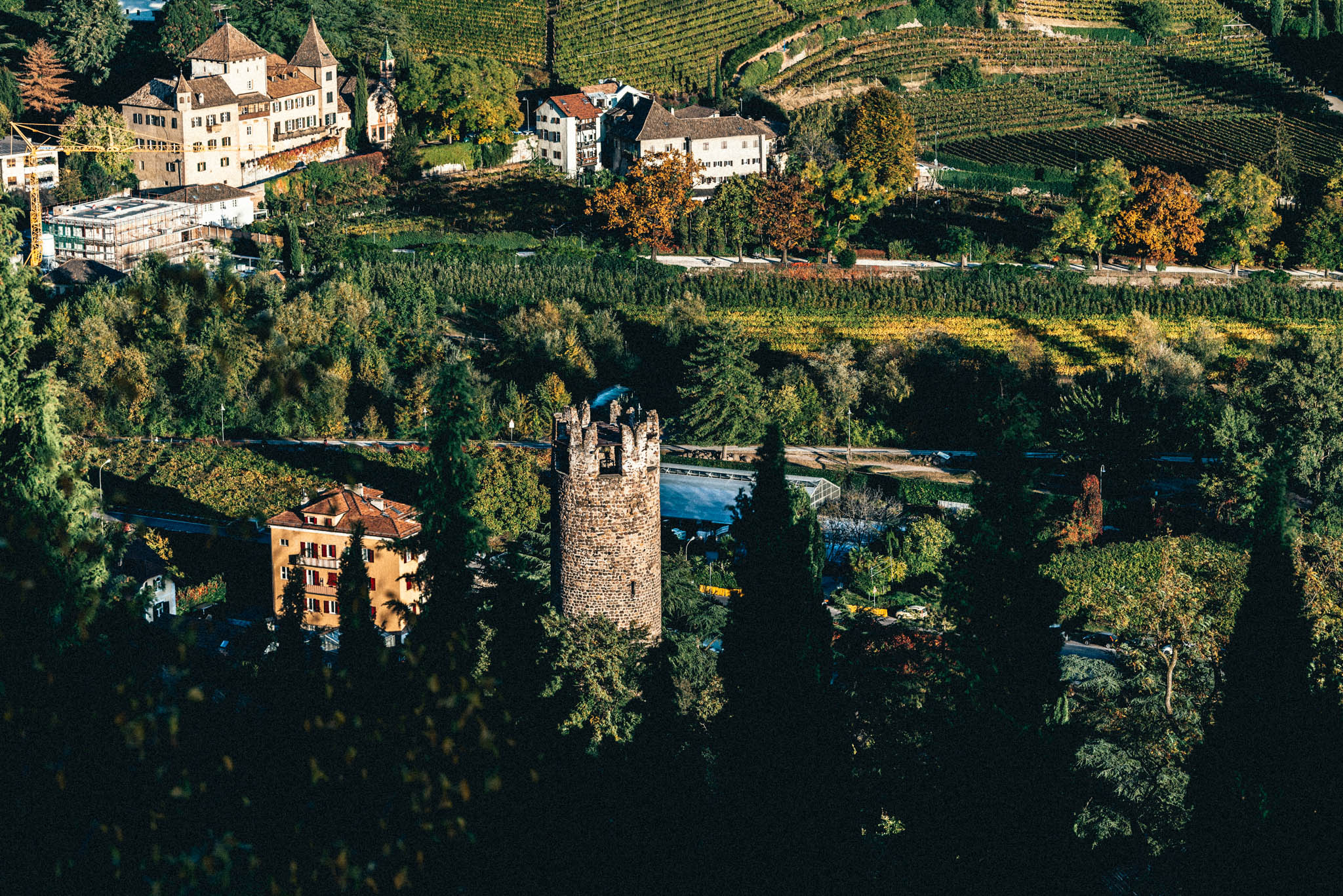
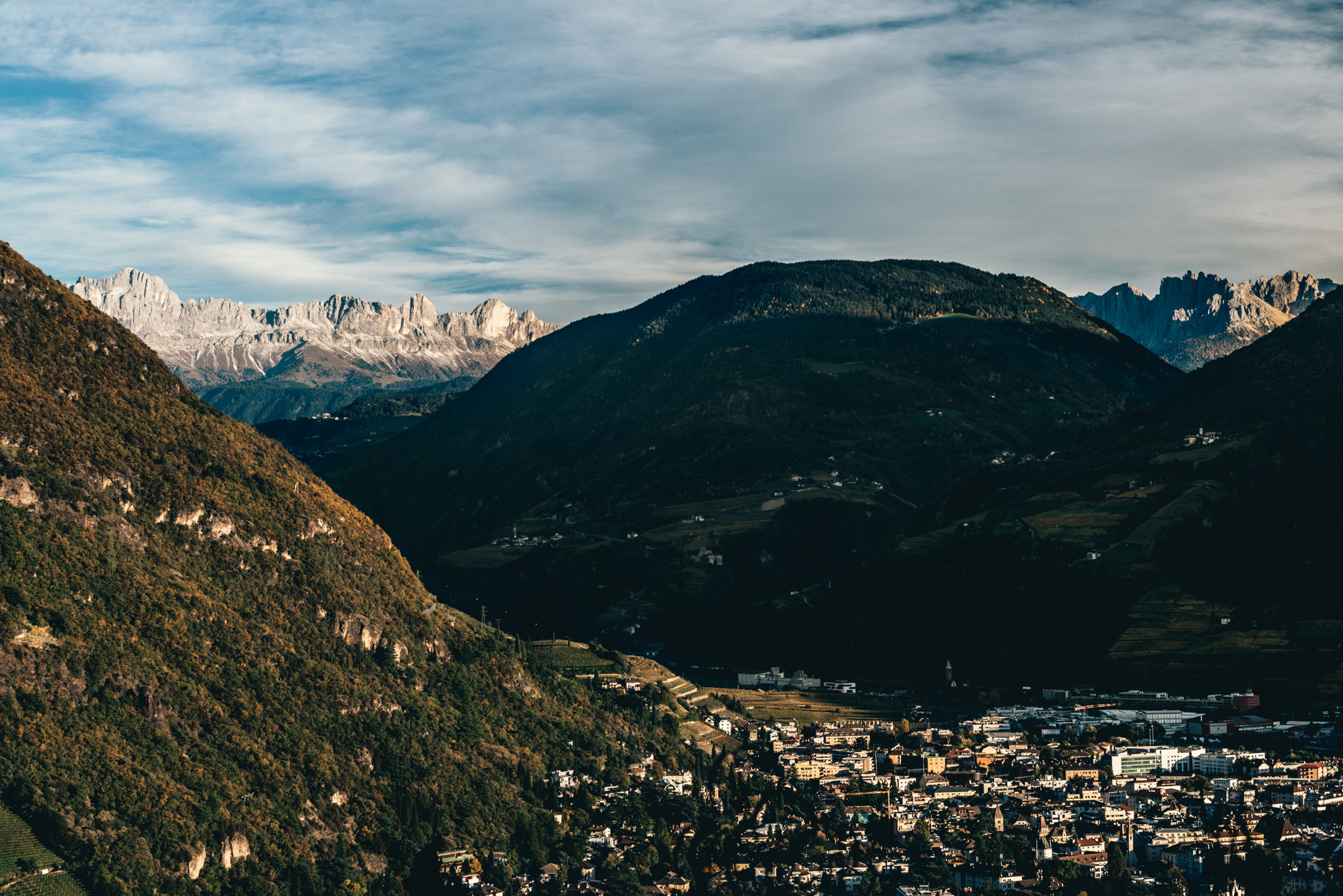
Thurnhof
Who: Andreas Berger
Where: Bolzano, Bozen, South Tyrol (Alto Adige, Italy)
What grapes: Sauvignon, Vernatsch, Lagrein
Key facts: This is a 3.5 hectare, 6th-generation family estate farming high mountain vines outside Bolzano. Guyot and traditional pergola vine trellising systems. 60% of the farm is apples, 40% grapes.
Website: http://www.thurnhof.com/en/
Thurnhof Sauvignon
Viticulture: Organic
Soil Type: Moraine-Alluvial & Porphyr Debris
Grapes: Sauvignon
Elevation: 800m
Method of Fermentation: in Stainless Steel
Bottles made: 4,000 - 5,000
I’ve never scaled the site behind Thurnhof to see these Sauvignon vines that Berger farms at 800 meters above sea level. I’ve seen the mountain, and get tired just looking at it. Act fast to experience Sauvignon Blanc from Alpine terrain: only 10 cases came to N.C. This isn’t SB from the gently rolling Loire, or even Friuli. Elderflower, tropical, with a long mineral finish, it’s exceptional, worth a taste.
Thurnhof St. Magdalener
Viticulture: Organic
Soil type: Porphyric Soil, Glacial Moraine
Elevation: 350m
Grapes: 90% Vernatsch, 10% Lagrein
Method of fermentation: Stainless steel fermentation followed by aging in 1,000-1,500-liter wooden barrels, bottled the April following harvest.
Bottles made: 4,000 - 5,000
Appearances by Andreas Berger’s wines are too rare in our home state. His farm is small, four hectares (there are four hectares of apples, too) and sometimes we miss our chance to buy. On a massive south-facing slope overlooking Bolzano, Thurnhof makes pitch perfect St. Magdelener/Sta. Maddalena. Translucent cherry color, spicy raspberry and tart strawberry flavor, more complex than a gulpable red should be, while remaining perfectly refreshing. Ninety percent Schiava/Vernatsch, 10% Lagrein, more or less.
Thurnhof Lagrein
Viticulture: Organic
Soil type: Porphyric Soil, Glacial Moraine Gravely soil of Grutzen just south of Bozen
Elevation: 350m
Grapes: Lagrein
Method of fermentation: Fermented in stainless steel and aged in large oak casks
Bottles made: 4,000
This fruity red wine is dominated by flavours of raspberries, mulberries and violet and is well structured with smooth tannins and good freshness. The Lagrein matures for a couple of months in large oak cask and is an ideal match for multiple dishes.
Andreas makes this red from a vineyard parcel in Grutzen, south of Bolzano. Aged in large wood barrel, the wine is an inky, mellow contrast to St. Magdelener’s brightness. Only 4,000 bottles were made, and some of those sadly ended up on the floor, after a barrel/hose pumping catastrophe, so we’re lucky to get 30 cases.
July 2021
At 8:30am the sun was just above the horizon. I wanted to see all of Andreas Berger’s vineyards: until we started the ascent! Suddenly the lower (300+m above sea level) rows became sufficient viewing. I was huffing and puffing as we climbed and talked about travel and family.. The hill behind Berger’s winery and home rises perilously to 450+ meters, at which point a new vineyard planted during the lull of Covid shares space with power lines that slouch into the city below. Seven hundred years ago there was a castle at the top of the hill. Across the valley and high above the residential outskirts of Bolzano, another castle remains. Castel Flavon, a structure which provides the name of the road that winds through several inscrutable roundabouts and one-way streets on its path to Thurnhof’s front door.
Five generations ago, when Berger’s family started growing vines at the location, metro Bolzano was a kilometer or more away. It’s an easy commute to the historical town center, a fact Andreas illustrates by biking to meet for dinner at the 500-year-old restaurant Voegele, a historic family-run place that still makes some of the best food in the city. The name of the restaurant used to be Red Hawk, but this imposing name was jokingly altered by locals to Voegele (little bird.) Eventually the family accepted their community’s perverse sense of humor and switched the official title. While marveling at carved wooden chairs and painted walls, I had perfect tartar garnished with mustard, fennel, pickled onions, fig jam and tiny chanterelles, and a trio of outstanding knodel. The knockout item was a beet dumpling, an earthy, floury carb-bomb that became even more delicious when paired with Falkenstein Riesling.
Before dinner we tasted all the wines from Thurnhof that aren’t currently available in N.C. With the help of a half dozen local winemaking colleagues, Andreas makes a sparkling metodo classico rosato. The group call themselves Tirolensis Ars Vini, and their collaborative endeavors have been going on since 1995. Berger claims they make the only sparkling Lagrein in the world. The wine is fruity and accessible, an altogether different iteration of this at-times brooding Tyrolean grape. It spends 30 months in the bottle on lees, and if I can ever manage to circumnavigate the Tax and Trade Bureau (they don’t like the label) it could make an appearance in our hometown.
The same group makes a multi-varietal white (SB, Chardonnay, Pinot Bianco, Gewurztraminer.) It was appealingly refreshing in the warm confines of Berger’s art-filled, unairconditioned living room. Aged in 500-liter tonneaux, the 2018 Tirolensis Ars Vini bianco was marked by the singular aromatic character of Gewurz, and the broad texture that I typically associate with Pinot Bianco. Andreas believes it to be a wine with many happy years of evolution ahead of it. I’m very interested in exploring its ageworthiness at a future visit.
We tasted 2018 and then 2017 Lagrein riserva. Both were aged in 1000-liter oak casks, 5-10% of which are new. 2018 is (from a farming perspective) the better vintage, but in my view that wine still needs time to open up and integrate some desiccating fine tannin. Andreas believes Lagrein reaches the beginning of maturity five years post-harvest, and will significantly improve until at least its 10th birthday. In contrast to the relatively disjointed 2018, the 2017 is open, with alluring red fruit and baking spice aromas, and a lovely soft/fresh mouthfeel.
Thurnhof also makes a “Bordeaux blend” of 80% Cabernet and 20% Merlot. It’s quite pleasant. Cabernet pepper shows up a little on the long finish, alongside a smidge of alcoholic heat.
Andreas’ 18-year-old son made an accidental appearance, stumbling into our informal tasting. Berger shares my hope that one of his quartet of children will develop an affinity for farming. The eldest son is away studying economics in Germany, certainly a wiser path than viticulture. Berger also has two school-age daughters. Over dinner it was revealed that the man is actually more of an apple farmer than grape grower. The harvest season for Tyrolean apples is August, on the horizon at the time of my visit. So, no typical European month of vacation for this hard-working farmer. Instead, weeks in the orchard, followed by the start of Sauvignon Blanc harvest in early September. The last grapes at Thurnhof (from a vineyard that looms 800 meters above the valley floor) won’t be ready until October. Luckily, Andreas employs two Slovakian farm workers to assist with the picking and pruning, and a “retired” local septuagenarian, without whom Andreas claims all winery activity would become impossible. The knowledge of lifelong farmers sustains so much vital agricultural activity across Italy. I hope it is passed on to the next generation.
By midnight, downtown Bolzano was becoming a street party. Bourbon St., to be precise. It was wild to see so many young Italians reveling in the lifting of Covid restrictions. After delicious grappa and schnapps, Andreas and I part company. He biked away to the winery, an urban farm separated from this bacchanalian revelry by one small hillside. I walk back to a beautiful old hotel on the periphery of the party, an island of quiet that faces the cathedral. God’s pied a terre in central Bolzano sports a green-and-black tile roof that’s more than a little reminiscent of a fancy deco bathroom floor. I like it. Sunday morning could use a little more color.
-JM



